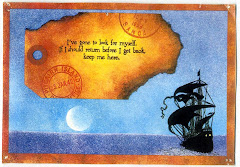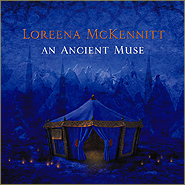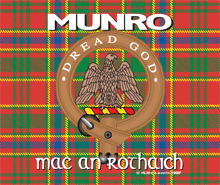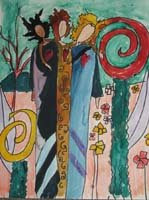 "And what is so rare as a day in June/Then, if ever, come perfect days", wrote the poet James Russell Lowell.
"And what is so rare as a day in June/Then, if ever, come perfect days", wrote the poet James Russell Lowell.Well, so far the June days in North Dakota have been rare, and not in a good way. This past Saturday, the city of Dickinson, about 90 miles west of Bismarck, had two inches of snow!! Now that's a rare June day! I had argued with my husband for years over whether or not it had ever snowed in North Dakota in June. I maintained that it had not.
I have been proven wrong, and not only by last Saturday's snow. The TV newscasters and meteorologists trotted out old records to show that that it has indeed happened in the past. (I will continue to maintain that it has never snowed in ND in September - I suppose I am wrong about that too. Maybe I grew up in the Camelot area of ND??)
It has also been really cold here this June. Yesterday it was in the 50s F when it should be in the 70s. Dan and I have only been able to dine out on the deck once all season. And we are still getting frost warnings as of June 10, when the average last frost in ND is May 21!!.
My friend from Dickinson sent me a photo of their snow, but I am not going to re-print it here. Too depressing. Instead, I will show you a beautiful flower!

CLOSE-UP OF HESPERIS MATRONALIS
As I have been driving to work in the mornings on Avenue C, I have been noticing the sweet rocket - also known as dame's rocket - that a lady (must be a lady, right?) has planted on her boulevard corner. Hesperis matronalis, as it is known botanically, is rarely used here as a garden plant, making it such a treat when I do spot its lovely lilac-colored flowers.
I've only ever seen sweet rocket in two other places in Bismarck-Mandan. Some plants annually grow in an undeveloped lot with scruffy trees in a semi-industrial area of town, and it grows profusely along the train tracks in Mandan.
My first memory of sweet rocket is seeing a stand of them in a wooded lot across from my Grandma's house in Crosby, ND (long since developed for housing). I thought they were so cool, not only because they were extremely pretty, but also because they seemed to have sprung up in the woods all on their own without human help. I suppose they could have escaped from someone's garden, but here's the catch: People in North Dakota just don't plant sweet rocket!
Sweet rocket has been cultivated for hundreds of years. It was a favorite of Marie Antoinette's, who was enamored of the double white variety. When she was imprisoned, the concierge daily brought her bouquets of pinks, sweet rockets and tuberoses. It is a popular cottage garden plant in England, and came to America with the colonists.
But because it can be invasive, it is shunned by "responsible" gardeners here in America. What a shame! It is attractive to bees, birds and butterflies, and in the evening it releases a heavenly scent. Because of this, it is also called "Mother of the Evening" (how pretty!). Other names are Damask Violet or Dame's Violet, because its scent is reminiscent of the violet.
Sweet rocket, as indicated above, thrives in lightly-shaded woodlands, but it can also grow in sunlight. It is the epitome of the old-fashioned flower.
A member of the mustard family, sweet rocket has been described both as a biennial and a perennial. It is sometimes erroneously called "wild phlox" (I have been guilty of this myself), but it has four petals, not the five petals of the phlox flower. There are white, lavender and purple varieties.
Sweet rocket has been classified as a noxious weed by some states. Wisconsin, for one, has had problems with it shading out the native wildflowers of the forest. However, since we have few forested areas in North Dakota, I don't see it being a problem here, especially if gardeners remove the flower stalks as they are fading and do not allow seeds to set.
(NOTE: A beautiful plant that is classified as a noxious weed and banned in North Dakota is purple loose strife, which can clog up waterways. I was sad to have to give up my loose strife (which was not saved from the list even when nursery growers declared their cultivars to be sterile).
I wish more people would plant old-fashioned flowers - hardy annuals or self sowers - instead of the usual petunias and geraniums. Some great old-fashioned flowers that come to mind are candy tuft, larkspur, poppies (not oriental, but papaver somniferous), bachelor buttons (cornflowers), Chinese forget-me-nots, cosmos, bells of Ireland, cleome and hollyhocks.
I also love lady bells (adenophora) and let them come up wherever they want. However, some people consider them a noxious weed too. But I argue that while ladybells can become overgrown, they are easy to pull out. I do find one old-fashioned flower to be way too invasive, and that is lavatera. I still haven't gotten rid of it!!
CASTLE GARDENS, KENT, ENGLAND
Sweet rocket or dame's rocket may be shunned here, but it is certainly valued enough to be showcased in one of the most famous gardens in the world, created by the English novelist Vita Sackville-West and her husband Nigel Nicholson. (And also at Thomas Hardy's cottage in Dorset, according to Rowan - see her comment.)
I hope the remainder of our June days will be "rare" too - but rare as defined by Lowell. Following is his entire poem:
**********
"WHAT IS SO RARE AS A DAY IN JUNE?"
AND what is so rare as a day in June?
Then, if ever, come perfect days;
Then Heaven tries earth if it be in tune,
And over it softly her warm ear lays;
Whether we look, or whether we listen,
We hear life murmur, or see it glisten;
Every clod feels a stir of might,
An instinct within it that reaches and towers,
And, groping blindly above it for light,
Climbs to a soul in grass and flowers;
The flush of life may well be seen
Thrilling back over hills and valleys;
The cowslip startles in meadows green,
The buttercup catches the sun in its chalice,
And there's never a leaf nor a blade too mean
To be some happy creature's palace;
The little bird sits at his door in the sun,
Atilt like a blossom among the leaves,
And lets his illumined being o'errun
With the deluge of summer it receives;
His mate feels the eggs beneath her wings,
And the heart in her dumb breast flutters and sings;
He sings to the wide world, and she to her nest,-
In the nice ear of Nature which song is the best?
Now is the high-tide of the year,
And whatever of life hath ebbed away
Comes flooding back with a ripply cheer,
Into every bare inlet and creek and bay;
Now the heart is so full that a drop overfills it,
We are happy now because God wills it;
No matter how barren the past may have been,
'Tis enough for us now that the leaves are green;
We sit in the warm shade and feel right well
How the sap creeps up and the blossoms swell;
We may shut our eyes but we cannot help knowing
That skies are clear and grass is growing;
The breeze comes whispering in our ear,
That dandelions are blossoming near,
That maize has sprouted, that streams are flowing,
That the river is bluer than the sky,
That the robin is plastering his house hard by;
And if the breeze kept the good news back,
For our couriers we should not lack;
We could guess it all by yon heifer's lowing,-
And hark! How clear bold chanticleer,
Warmed with the new wine of the year,
Tells all in his lusty crowing!
Joy comes, grief goes, we know not how;
Everything is happy now,
Everything is upward striving;
'Tis as easy now for the heart to be true
As for grass to be green or skies to be blue,-
'Tis for the natural way of living:
Who knows whither the clouds have fled?
In the unscarred heaven they leave not wake,
And the eyes forget the tears they have shed,
The heart forgets its sorrow and ache;
The soul partakes the season's youth,
And the sulphurous rifts of passion and woe
Lie deep 'neath a silence pure and smooth,
Like burnt-out craters healed with snow.
AND what is so rare as a day in June?
Then, if ever, come perfect days;
Then Heaven tries earth if it be in tune,
And over it softly her warm ear lays;
Whether we look, or whether we listen,
We hear life murmur, or see it glisten;
Every clod feels a stir of might,
An instinct within it that reaches and towers,
And, groping blindly above it for light,
Climbs to a soul in grass and flowers;
The flush of life may well be seen
Thrilling back over hills and valleys;
The cowslip startles in meadows green,
The buttercup catches the sun in its chalice,
And there's never a leaf nor a blade too mean
To be some happy creature's palace;
The little bird sits at his door in the sun,
Atilt like a blossom among the leaves,
And lets his illumined being o'errun
With the deluge of summer it receives;
His mate feels the eggs beneath her wings,
And the heart in her dumb breast flutters and sings;
He sings to the wide world, and she to her nest,-
In the nice ear of Nature which song is the best?
Now is the high-tide of the year,
And whatever of life hath ebbed away
Comes flooding back with a ripply cheer,
Into every bare inlet and creek and bay;
Now the heart is so full that a drop overfills it,
We are happy now because God wills it;
No matter how barren the past may have been,
'Tis enough for us now that the leaves are green;
We sit in the warm shade and feel right well
How the sap creeps up and the blossoms swell;
We may shut our eyes but we cannot help knowing
That skies are clear and grass is growing;
The breeze comes whispering in our ear,
That dandelions are blossoming near,
That maize has sprouted, that streams are flowing,
That the river is bluer than the sky,
That the robin is plastering his house hard by;
And if the breeze kept the good news back,
For our couriers we should not lack;
We could guess it all by yon heifer's lowing,-
And hark! How clear bold chanticleer,
Warmed with the new wine of the year,
Tells all in his lusty crowing!
Joy comes, grief goes, we know not how;
Everything is happy now,
Everything is upward striving;
'Tis as easy now for the heart to be true
As for grass to be green or skies to be blue,-
'Tis for the natural way of living:
Who knows whither the clouds have fled?
In the unscarred heaven they leave not wake,
And the eyes forget the tears they have shed,
The heart forgets its sorrow and ache;
The soul partakes the season's youth,
And the sulphurous rifts of passion and woe
Lie deep 'neath a silence pure and smooth,
Like burnt-out craters healed with snow.
~James Russell Lowell
































9 comments:
Oh the joys of Google. Check this out Julie. My bad? http://areavoices.net/stormtrack/?blog=13172
Our June weather is like yours - cold and wet, it's pouring at the moment. Hesperis matronalis is a lovely plant, it was growing in the garden of Thomas Hardy's cottage in Dorset when I was there last week and is often found in cottage gardens over here. I've certainly never heard it called a noxious weed but I suppose, that like many other things both plant and animal, it is fine in its native surroundings but can be a big problem when introduced into other countries.
Oh, Annie,
You are SO bad. I'm not showing that to Dan!!
Our June is cooler than usual too.
That's a good thing for us though the temps hover under 100 degrees most days this month.
I love ND's wildflowers.
Oh, these flowers are so pretty. I've never heard of sweet rocket! My grandma always had hollyhocks and bachelor buttons in her yard. I love them.
We are having weird weather down here too. Not even getting into the 70's most days! I'm lovin' it, all except for the wind!!
june here is the onset of the wet season so it practically rained everyday, but what's weird is, it started raining as early as april hence our summer is short. must be the climate change...
Hi Julie I love all those old cottage garden plants. I have to be careful what I attempt to grow because some thrive a little too well - my Love-in-a-mist has not been shy with it's love this year seedlings have been sprouting up all over the place. But that's what I also like about self seeding plants they pop up in unexpected places.
Wasn't it Vita Sackville-West who when visiting friends, would drop a handful of seeds which eventually bloomed to remind her friends of her visit?
Winter frosts have finally arrived here this morning ... might just mean you will see more warmer weather now. Smiles*!*
Here in Seattle, we've had a June full of sunny days and no rain. Most strange.
I love the self-sown cottage flowers- they usually have wonderful scents and they find themselves in the most unexpected places.
I always wonder when I see California poppies for sale in the nursery. They seem to find their way to the spot that suits them all by themselves. Buying a plant might not make it grow in your garden.
It has been cooler and rainy here...but snow in June is indeed depressing!
Our woods have lots of the wild phlox so I do see the similarity with the sweet rocket!
Post a Comment